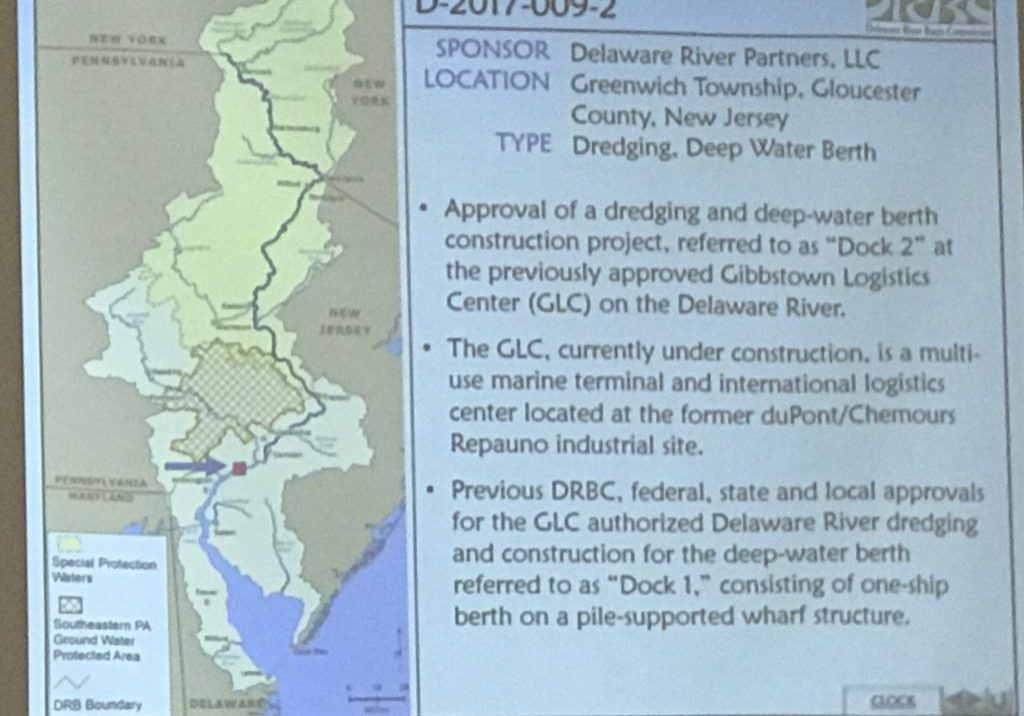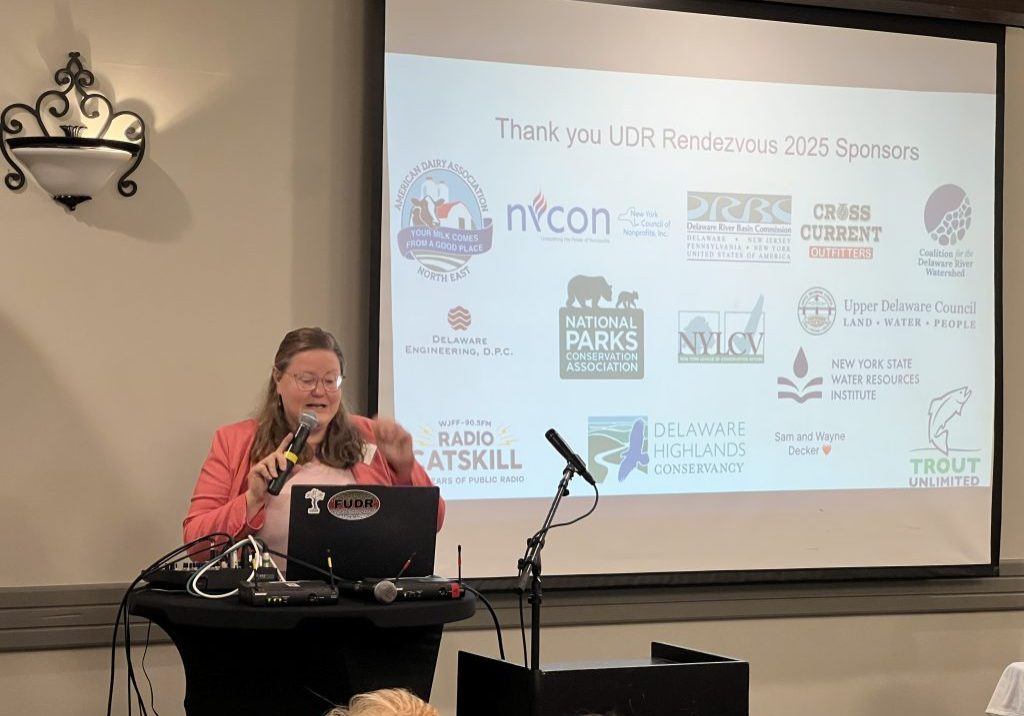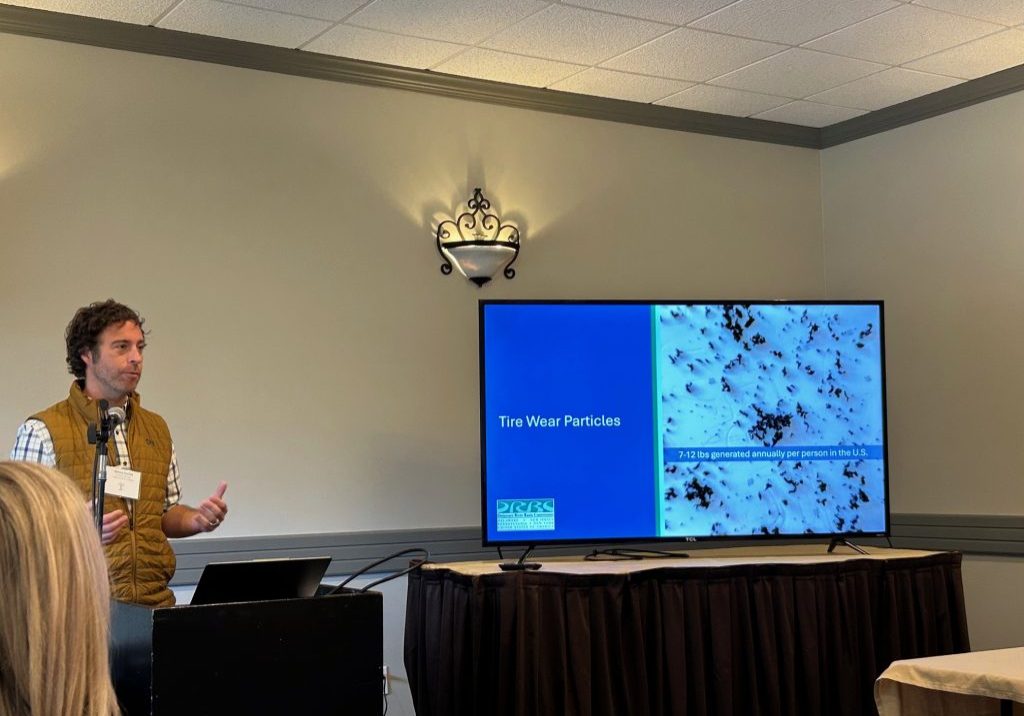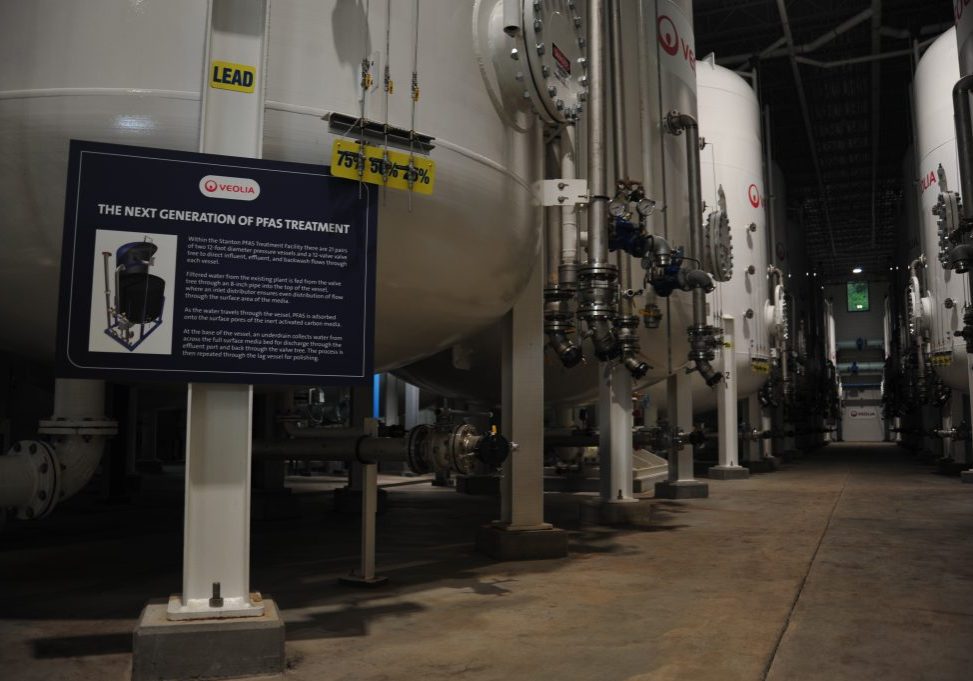
Mammoth industrial park planned near Delaware River could transform Slate Belt
River Pointe Commerce Park, with 13 warehouse-sized buildings of more than 6 million square feet, represents the largest project in the Lehigh Valley perhaps ever, planners say
| January 24, 2023
Head east on I-80 from Stroudsburg, Pa., in the heart of Pennsylvania’s Poconos – once renowned for lovers’ resorts featuring heart-shaped tubs – and snake your way through a series of S-turns.
Drive over the Delaware River on the Portland-Columbia Toll Bridge and into Upper Mount Bethel Township, Pa., (population a bit under 6,500).
Here the landscape is transformed from the tourist- and attraction-reliant Monroe County, Pa., about 10 miles away to an area known as the Slate Belt.
The strip malls and souvenir, candle and candy shops of the Poconos give way to narrow, twisty roads, farms and homes, a couple of places to eat, the Delaware River and, in the bleak midwinter, bare trees, their branches looking like arthritic fingers.
It’s in and around here on more than 800 sprawling acres that a project is proposed that is so mammoth that it is described in superlatives usually reserved for the construction of Olympic venues or mega-malls.
The development, known as River Pointe Commerce Park, is actually three distinct projects comprising 13 warehouse-sized buildings taking up more than 6 million square feet — roughly the equivalent of 43 Costco stores.
The Lehigh Valley Planning Commission, in a July 2022 letter to township planners, cast the project in sweeping terms, describing it as “the largest in the Lehigh Valley in decades and possibly ever.”
At full buildout, the overall development could represent an investment of well north of $1 billion (yes, that’s “billion” with a “b”).

What’s planned?
The Commerce Park plan has three components: River Pointe Logistics, RPL East and 303 New Demi Road, which are projected to be built in phases over 10 years.
Public records show that a 420,000-square-foot building is proposed at 303 Demi Road and a 388,800-square-foot building would rise at 5027 River Road. Other buildings would rise on lots ranging in size from nine acres to 158 acres, according to Planning Commission records.
The proposal, which has been in the making for about eight years, gained momentum in the past couple of years as applications took shape and planning and permitting reviews intensified.
Volumes of bound engineering and traffic reports, letters and rubber-banded maps that look like oversized rolled cigarettes cover part of a table at the Planning Commission’s offices. Those represent just the first versions of submissions by the developer, to say nothing of revised filings coming by the stack-load in response to planners’ feedback. According to some notations, the submissions are up to their fourth revisions.

The developer, Louis Pektor, is best known in the Lehigh Valley for his numerous real estate deals and projects in Bethlehem, Pa. The Morning Call of Allentown, Pa., once quoted a real estate agent as saying that Bethlehem should be renamed “Pektorville” for the many ways Pektor had left his mark on prime locations in the city.
Over the years through his Ashley Development Corp., Pektor, who grew up on a family farm near Easton, has had a hand in dozens of retail, commercial and office building projects throughout the Lehigh Valley, including St. Luke’s at Union Station and the Fireman’s Fund Building.
Pektor’s track record boasts project costs of more than $800 million and the developments of more than 6,000 residential units and 2 million square feet of commercial space.
He said the Commerce Park plan represents his largest single undertaking. Sunk costs already total $100 million, he said. His daughter Lisa, a liaison to the project and the founder of ALT Realty LLC, a full-service real estate brokerage company, said that when and if the entire development is realized, it could top out at $1.5 billion to $2 billion.
“At the end, it’s a big project,” Louis Pektor said. “In the interim, it’s a piecemeal development.”
The area where Commerce Park would rise is already home to Air Liquide Advance Materials, which is a specialty chemical manufacturer in the township, and Lamtec Corp., which makes products for the buildings trade. According to census data, total transportation and warehousing revenue in the township amounted to $28 million in 2017, the most recent year for which figures are available.
Regardless of the industrial presence already there, Pektor’s plans could utterly transform an area better known for its proximity to the Delaware Water Gap National Recreation Area, Appalachian Trail and being home to a now-shuttered coal-burning power plant with two towering smokestacks in Portland, Pa., near the Delaware that had been the subject of lawsuits and protests.
Commerce Park could put Upper Mount Bethel Township on the map in a way it is not now.
Online searches about the township suggest that the closest noteworthy attractions are a winery across the Delaware River in Columbia, N.J., the Columcille Megalith Park in Bangor about 15 minutes away, or the Statue of Liberty in New York City. Even the website for the township government, which is housed in an unadorned yellow building, is nondescript. Click on links for members of the Board of Supervisors or for Planning Commission members and the pages are blank.
Impacts and opposition
In a May 2021 letter to township planners, the Lehigh Valley Planning Commission framed the Commerce Park proposal as game-changer for the township’s future.
“The proposed project, while strategically located, is pivotal to the long-term viability of the township and poses substantial impacts” to its “character, infrastructure and quality of life if left unmitigated,” the commission wrote.

Opponents have cited issues ranging from impacts on the environment and viewsheds to concerns about truck and vehicular traffic clogging local roads. Activists with the two leading opposition groups — Don’t Flush Upper Mount Bethel and Concerned Citizens of Upper Mount Bethel Township — either declined to comment or did not respond to requests to comment for this article.
What companies will ultimately occupy the buildings, how tall the structures will rise, what traffic they will induce, how much stormwater will be generated and questions about air, water and wastewater protections are all the subjects of intense scrutiny by planners, engineers and critics.
For instance, RPL East would have a net impervious cover of more than 720,000 square feet, according to commission records. The proposed building would be about 275 feet from the Delaware River at its closest point.
Work on a drip irrigation system that would recharge the aquifer with treated sewage (otherwise known as “gray water”) is in the works. The irrigation heads would be sunk into the ground and the water would seep into the so soil.
The plan, Pektor said, is to connect with a public treatment system and then distribute the treated water across an 88-acre area specifically purchased with this “closed-loop” system in mind. He said negotiations were ongoing to connect to a public wastewater treatment system but declined to name a potential municipal suitor.

Louis Pektor
(A spokeswoman for the Delaware River Basin Commission, a regulatory body overseeing the four-state watershed, said gray water was not something it regulated and that would fall to the Pennsylvania State Department of Environmental Protection. It was not immediately clear how often this irrigation system has been used in the watershed.)
In an op-ed in The Morning Call last year, Sharon Davis, manager of the Middle and Upper Delaware River Program for the National Parks Conservation Association, said the project could harm the nearby Delaware Water Gap National Recreation Area, which is among the most-visited areas managed by the National Park Service.
“Allowing the development of industrial buildings so close to the Delaware River could result in devastating impacts,” she wrote. “Impervious surfaces will increase, leading to stormwater runoff and sedimentation flowing into the Delaware River.”

The association cited concerns that the area to be developed features “sensitive natural features,” including wetlands, riparian buffers, steep slopes and woodlands.
“We are concerned the proposed River Pointe Logistics Center will irrevocably alter a nationally significant viewshed, destroy sensitive ecological features, potentially harm the Delaware River and create air pollution from increased truck idling and congestion,” Davis wrote. “This outcome is not guaranteed; but it is unacceptable.”
As for concerns that the buildings will blot the landscape with 100-foot-tall structures, Pektor said most of the tenants would be accommodated in buildings up to 45 feet high.
“We couldn’t find 15 high-building users if we tried,” he said. Lisa Pektor said a consultant has been hired to assess the viewshed from the river and to figure out ways to minimize potential visual harm.
In her Op-Ed, Davis called on local officials to recommend scaled-down structures that would not destroy views from a number of vantage points, including the Portland-Columbia Pedestrian Bridge, the Portland-Columbia Toll Bridge and from the river.
Warehouses vs. manufacturing
River Pointe Commerce Park, which promotes itself as being less than two miles from I-80, with ready access to ports in Newark and Philadelphia, is part of a larger trend affecting the Lehigh Valley, which environmentalists have called “ground zero” for the development of large warehouse, logistics and distribution centers.
As Delaware Currents has previously reported, more than 27 million square feet of warehouse space was approved for construction in Lehigh and Northampton Counties from 2017-21, raising concerns about stormwater runoff from impervious surfaces.
How the buildings in Pektor’s development will be used has been a contentious issue.
Manufacturers, he said, would make for longer-lasting tenants who are more deeply invested in a site than logistics centers, which might relocate or need interior retrofitting every five years to accommodate changing consumer demands.
“If we wanted to sell this to one or two logistics guys, we could do that tomorrow,” he said. “It’s not where we’re going.” He added, “If we had our choice, it would be 100 percent manufacturing.”
If the buildings are used as distribution warehouses instead of for manufacturing, it means more truck traffic.
Average daily truck traffic on Route 611 is now 959, a figure that at full buildout by 2031 could reach nearly 1,500 per day, according to an engineer’s report. Vehicle traffic could jump to almost 13,500, from nearly 8,900.
On River Road, the difference would be even more dramatic.
Average daily truck traffic is projected to rise to 1,558 from 47, and vehicle traffic would also catapult, to 8,371 from 943 vehicles on average per day.
Opponents have seized on these figures and highlighted worst-case calculations of one truck trip being generated every five seconds. To emphasize its point, the Facebook page of “Don’t Flush Upper Mount Bethel” features a mocked-up video of a deer getting run over by a truck.
In a related issue, Lehigh Valley planners have flagged a low-clearance train bridge with minimal shoulder widths on River Road as being especially problematic.
They warned that the bridge “severely limits the ability for trucks to travel north on River Road to access the Delaware River Joint Toll Bridge Commission Bridge connecting to Interstate 80 in New Jersey, Route 611, and will result in trucks traveling south on River Road, which will have a devastating impact and financial implications for the local roads in Upper and Lower Mount Bethel Townships.”
Pektor said opponents – whom he referred to as “dissidents” – had accented extreme traffic figures and said that in reality, the number of trucks would likely be substantially less – perhaps half – of those estimates on paper.
He said he was looking to attract high-end manufacturing or high-tech companies that would, in turn, employ highly skilled workers who would be well paid. He said, for example, that he hoped to lure a chip-manufacturing plant to the Demi Road site. Such an employer could have as many as 600 workers and generate far fewer truck trips, he said.

Literature for the project touts the creation of 4,000-plus “good-paying jobs.” As for the kinds of jobs that could be created, Pektor said if these were logistics jobs, the baseline pay would be about $20 an hour, up from $15 an hour a few years ago. But, he said, those were on the low end of the pay scale and that high-tech jobs would pay substantially more.
If a logistics center job paid $20 an hour for a 40-hour workweek, it would work out to $41,600 a year, or bit less than the township’s per capita annual income of $44,756, according to census figures.
Other benefits
The website dedicated to the project touts the benefits of an improved tax base in a township where nearly 85 percent of the land is federal- or county-protected open space, and thus exempt from taxes or assessed at a reduced rate.
“River Pointe Commerce Park will single-handedly double the tax base of Upper Mount Bethel Township using only 2 percent of its total land area by increasing real estate tax and earned income tax revenues,” the site says. “Post-development, the property will have real estate taxes 170 times greater than pre-development.”
Nearly 60 acres will be dedicated to recreational trails and open space, a figure that exceeds what the regulations require, Lisa Pektor said.
Through various funding mechanisms, the project would underwrite improvements to the township’s recreational facilities, road maintenance equipment and public safety services, such as the local fire department, she said. For instance, the developers would pay a $300,000 impact fee for the development of the Demi Road site alone.

What’s ahead
With its complexity, and multiple layers of reviews and approvals, the project is moving forward at a seep-n-creep pace.
The demolition of the former GenOn coal-burning plant, with its two 480-foot-tall smokestacks, could begin as early as February or March, Louis Pektor said, adding though that was an optimistic projection.
The site, which closed in 2015 after more than 50 years in operation, needs to be remediated of asbestos. The clean-up and demolition, which Pektor described as a “multi-million-dollar ticket,” could take up to 16 months. The state Redevelopment Assistance Capital Program has earmarked up to $500,000 toward asbestos remediation.
The Lehigh Valley Planning Commission’s work is largely advisory and offers guidance to township planners who are in charge of approving the project. However, other agencies have oversight, such as the Pennsylvania State Departments of Environmental Protection and Transportation.
A Delaware River Basin Commission spokeswoman, Kate Schmidt, said commission staff members have had an informal conference with the developers. “We have not received an application in-house for this project to date,” she said. “It is unknown at this time whether the project will meet our thresholds for review.”
Concerned Citizens of Upper Mount Bethel Township this month appealed a stormwater discharge permit issued by the state DEP related to construction at the Demi Road site.
The appeal, which was filed on Jan. 2 and comes nearly a year after a public hearing on this segment of the project, is winding its through the state Environmental Hearing Board.
Among other issues, a lawyer for the activist group cited a need for the DEP to look at the cumulative impacts of the overall Commerce Park project.
“We appreciate the fact that the public hearing was advertised as having a broader focus beyond the Demi Road permit currently pending before the Department,” wrote the lawyer, Kenneth T. Kristl. “Given the massive size of the overall project (approximately 800 acres), and its location in close proximity to the Delaware River, the Department must avoid the temptation to put on project-specific blinders that segment a massive cumulative impact into smaller, isolated pieces.”
In a separate procedural development, a hearing by the Zoning Hearing Board of Upper Mount Bethel Township that had been scheduled for Jan. 24 has been postponed until 7 p.m. on March 28. The hearing, according to a public notice, is to consider an exemption being sought related to the proposed sewage disposal fields on Potomac Street.








Very well resourced, definitive and well written. Citizens hope for the best, but are concerned our quality of life will be sacrificed for financial gains.
I’m concerned about the peoples wells in the area of the drip field. How will this affect the aquifer ?? Great article. Thank You.
How much empty warehouse space is there? Will the developers live in the area? How high are the buildings? Is there emergency equipment on hand to fight fires? What will be stored in the buildings and how will that be monitored? Many if us fought to have the power plant closed due to toxic chemicals being spewed toward those of us in NJ. As Chairman of the Blairstown Environmental Commission I was one of the people who testified before the EPA meeting in Belvidere. The issues above may have been addressed. However our quality of life in this area will definitely be impacted and I fear in a negative way.
“Through various funding mechanisms”
Sounds like River pointe logistics is not paying for it… They say we will need road more equipment etc
So far, the benefits of this project For our community seem very small.
The only benefit may be that we don’t have to incur any more development than this.
They say the project will bring more tax revenue. . .
If they came out and said they were going to lower our taxes, that might be something. . .
We should’ve taken to the streets to deny this project. 😐
It amazes me how against it the residents are and how little it matters. People are being threatened with lawsuits to shut up. The destruction to the environment just does not matter. Money first…